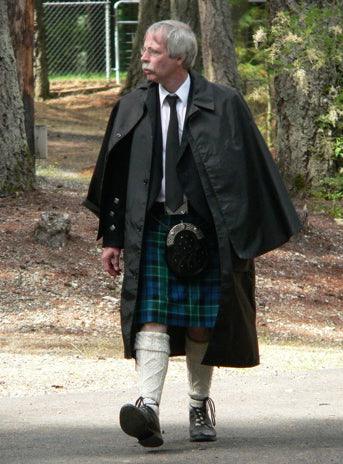Capes: A long and Interesting History

Capes are frequently worn today as costumes or as part of a military dress ensemble. However, before they were relegated to a fashion accessory, they used to hold more symbolic meaning for wearers. No precise date has been established for when capes first appeared in history. They have been around for centuries and have evolved from a very basic piece of apparel to clothing that now signifies power, flair, and occupation.
The Earliest Days of the Cape
As noted, no written account tells us when the cape first made its appearance in history. It is theorized that this piece of clothing has been worn literally since the start of time. In fact, an ancient French word, “cloke,” is thought to derive from the Latin word “cloca,” meaning cape. One of the earliest accounts of capes being worn comes from a costume plate that dates back to 1066. This costume plate depicts a soldier or a shepherd wearing a cape across his shoulders. Another historical account, this one dating to the 1300s, shows a woman sitting down while wearing a cape attached to the collar of her dress. The earliest written accounts sometimes refer to capes as mantels or “mentels”. Other accounts simply refer to them as cloaks. People who made cloaks or capes in the medieval times were called “mentel makers.”
The Historical Meaning of the Cape
Despite no date being assigned for the cape's first appearance in history, this garment has taken on different meanings throughout time. For example, the way a cape was worn or its style and length often denoted the wearer's station or occupation in life. Capuchin monks wore capes that had hoods and were cut to reach their waists. Elizabeth I, alternatively, wore elaborately stitched capes that went all the way down to her feet so her feet would not get wet.
History tells us that the earliest styles of capes were merely round pieces of cloth that attached to a person's collar. As time went on, however, capes began being tailored and sometimes embellished with stitching, depending on the wearer's rank or occupation.
Victorian-Era Capes
As with much of fashion, capes took on a different level of style and significance in the Victorian Era. In fact, they became more fashionable for women to wear than men. In the 18th century, it was custom for well-bred women to wear bright red capes, also known as scarlet capes. Scarlet capes became a hallmark of high fashion during the Victorian Era, and any woman with breeding and good societal standing was rarely seen in public without one. Scarlet capes signaled to the rest of society that the woman wearing it was neat, clean, and going about her usual business, like visiting neighbors or going to church. These capes were so important to women that many wore their capes as part of their wedding ensembles.
Capes in those days also were made from a variety of materials. The most basic of capes were made from broadcloth. However, more elaborate and expensive styles were made from velvet or satin. They typically were double stitched and trimmed with fur like ermine or chinchilla to make them even more stylish. They also were cut long so that a woman would be properly covered and also so that she would be protected from the elements while wearing it.
Modern Capes
From 1066, and even before, until now capes continue to make their impact on the world of fashion. While perhaps not the hallmark of high society or style, they still have their place in modern society. While many think of capes as being part of a superhero or Halloween costume, they are in fact more than just costume accessories.
In fact, all branches of the military include capes as part of a female soldier's dress uniform. Many police units across the world also allow both men and women to wear capes to protect them the cold and rain. Likewise, many marching bands utilize capes as part of their uniforms and often highlight their capes during certain parts of their performances, particularly during percussion movements.
The cape has been around since the inception of time. Its significance has evolved steadily throughout the centuries.

